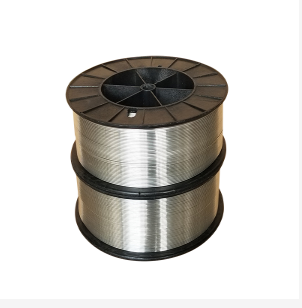

current position:Information and data>What are the advantages of thermal spray zinc wire?
【Summary】:
The principle of thermal spraying zinc wire is to first use high-pressure air and pipes to blow sand to the surface of the workpiece to remove rust and oxide scale on the metal surface, and at the same time increase anesthesia on the surface, increase the adsorption force through thermal spraying, and then use oxygen, acetylene or Electric heat source (large workpieces are heated by electricity, small and medium-sized oxygen, acetylene), and the zinc mist is sprayed on the metal surface at high speed through compressed air and special tools (spray guns).
The principle of thermal spraying zinc wire is to first use high-pressure air and pipes to blow sand to the surface of the workpiece to remove rust and oxide scale on the metal surface, and at the same time increase anesthesia on the surface, increase the adsorption force through thermal spraying, and then use oxygen, acetylene or Electric heat source (large workpieces are heated by electricity, small and medium-sized oxygen, acetylene), and the zinc mist is sprayed on the metal surface at high speed through compressed air and special tools (spray guns).

What are the advantages of thermal spray zinc wire?
Thermal spray zinc wire is hot stamping with spray, the coating is effectively adhered, and the anti-corrosion effect eliminates maintenance for more than 20 years. The initial investment is greater than that of spray painting, but spray painting should be maintained after 2 to 3 years, and the long-term labor and material costs are much higher than thermal spray zinc. The advantages of the combination of the current cold and hot zinc spraying technology and the traditional hot-dip galvanizing technology are introduced.
1. The pretreatment of cold galvanizing process adopts pickling and phosphating process, and there are acid and alkali residues on the surface of the workpiece, leaving the danger of corrosion. Make the cold galvanized layer easy to fall off. The pretreatment of the thermal spraying zinc wire process uses the sandblasting process, the working surface is very clean and rough, and there will be no inward corrosion after the surface is sprayed with zinc, and the zinc layer will not fall off.
2. The thermal spraying zinc wire process has a temperature of about 440, so the workpiece will deform when heated. When spraying zinc, the temperature is very low, and the surface temperature of the workpiece is less than 80 °C, so the workpiece is not deformed.
3. The workpiece using cold and hot-dip galvanizing process is limited by the length, width and height of the electroplating tank. If the zinc spraying process is used, the workpiece is not limited.
4. There are also on-site maintenance problems in the cold and hot-dip galvanizing process. Only on-site installation of welding, processing, damage during transportation, and repair of paint, such as zinc spraying process, can be used on site for maintenance to avoid process breakthroughs.
5. The pretreatment of the thermal spraying zinc wire process uses pickling and phosphating, so the surface of the workpiece has no roughness and the adhesion of the coating is poor. The pretreatment of the zinc spraying process uses spraying, so the surface of the workpiece has roughness and the adhesion of the coating is good. , tensile strength 6Mpa.
6. The thermal spraying zinc wire process is very serious to the water pollution and the environmental problems are very prominent. The thermal spraying zinc has very little environmental pollution. Therefore, the anti-corrosion application of thermal spray zinc technology on the surface of steel structures will become more and more extensive.
In order to ensure the design requirements and engineering quality, a comprehensive inspection of the finished product must be carried out. Including visual inspection, thickness inspection, adhesion inspection.
Processing inspection: The appearance of the main eye prints includes bubbles, cavities, concave and convex particles, cracks and other phenomena.
Thickness check: check with HCC-18 domestic magnetic thickness gauge.
Adhesion inspection: Use a knife to scratch to test the adhesion strength, and use a knife or a screwdriver to scratch the less important parts of the fuselage or parts that are considered to be of poor quality. Only the bright scratches of the new electroplating occur, and there is no peeling phenomenon, it is qualified. If the eliminated area accounts for 15% of the inspection site, it will be considered unqualified.
The area of each inspection point of the above thermal sprayed zinc wire should not be less than 5% of the total area.
Hot information

